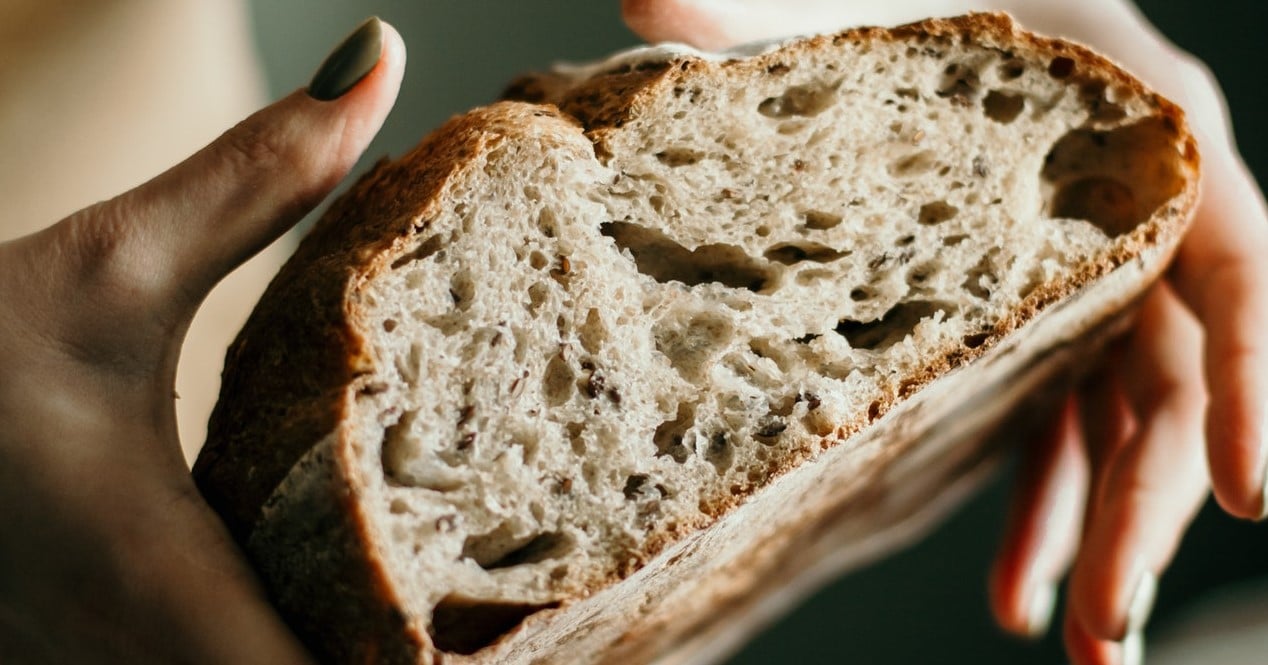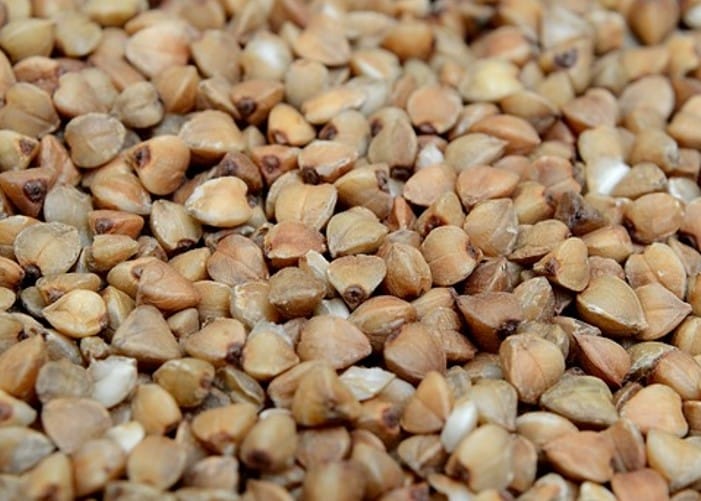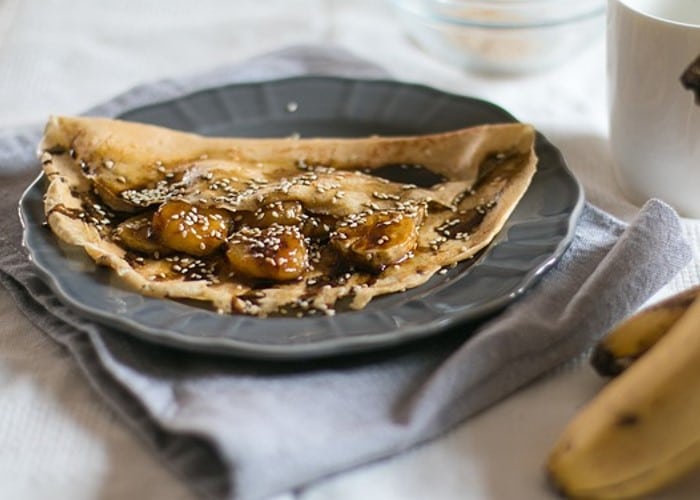
Buckwheat is a gluten-free pseudocereal that has been around for centuries and has suddenly become fashionable now. This is due to its multiple health benefits, but there are also contraindications. Throughout this text we are going to get to know this false short-cycle cereal more closely.
It is quite likely that we have seen all kinds of products made with buckwheat, from breads to pastries and cookies. When something becomes popular, and more so in social environments like today, companies tend to exploit those products.
This is why it is more than likely that we have seen, read and even bought and tried something made with buckwheat. A priori we can think that it is one more cereal like wheat itself, barley, oats, rye, etc. but not.
Although buckwheat implies the word wheat, it is not considered a common cereal and we are going to learn this, and much more, in this text. When we finish the text we will fully understand what this pseudocereal is, where it comes from, what it contributes to the body, what benefits eating it has and its most important contraindications.
What is buckwheat
This food is also known as buckwheat and despite how contradictory it may seem, it is not considered a cereal. Buckwheat or black wheat is a pseudocereal like quinoa and amaranth, for example.
Of course, it has characteristics very similar to cereals such as wheat, spelt, oats, etc. This dark brown pseudocereal originates from Central Asia and the Siberian plains. Being so easy to grow and having such a short cycle, it was easy to take it to other parts of the world such as Europe and America. It adapts well to acid soils with low fertility.
The flower that gives rise to this cereal is used in pharmacology to treat fragile capillaries and their permeability. An important function that joins others such as curing tension in the neck and shoulders by filling a cushion or pillow with these seeds.
Buckwheat is sold as whole grains, just like conventional wheat, only the buckwheat is pyramid-shaped, and in flours. In both states it is a gluten free food, so the contraindications do not go there.
It is rare to see it, but this plant can be eaten in tender shoots, although its tradition is more towards natural medicine to promote blood circulation.

Nutritional properties
This is where the important thing comes in and it is that this pseudocereal is highly nutritious and is to which it owes much of its fame, apart from the peculiar flavor that its flour gives to breads and pastries.
100 grams of buckwheat provide 70 grams of carbohydrates, so it is not suitable for the keto diet; It provides 10 grams of protein, which is why it is one of the favorite breads for athletes; Among the polyunsaturated fatty acids in this pseudocereal, Omega 6 stands out and has 4 grams of fiber per 100 grams of product.
Regarding the vitamins and minerals that this buckwheat provides, we have a wide variety of important nutrients such as vitamin A, B1, B2, B3, B6, E and J, and then there is potassium, phosphorus, magnesium, calcium, iron, selenium, zinc, copper and fluoride.
Services
Now we are going to understand why buckwheat has become so popular in recent months and it is that it is full of benefits for our health. We are going to review the most important benefits that eating buckwheat brings us daily.
Let's remember that not any type of product is worth it, but we have to look at the quantity. It is best to choose one that is 100%, but it is very difficult to find it, so we will have to make sure that it has a minimum of 35% and has quality ingredients without dyes or additives.
Lowers Cholesterol
This food that we are talking about today helps to reduce blood cholesterol, in the same way that it helps to counteract cardiovascular diseases. It also improves the permeability and reduces the fragility of blood capillaries.
By taking a certain amount of buckwheat daily, in a healthy way, we can also reduce hypertension and this is thanks to the contribution of rutin, an antioxidant that prevents clot formation and therefore helps reduce high blood pressure.
Lowers blood sugar
In the same way that taking between 120 and 180 grams of buckwheat a day helps us reduce cholesterol and all the problems associated with it, we also manage to reduce blood sugar given its low glycemic index. It is a food suitable for celiacs or diabetics.
It can also be used as a preventive of obesity and it is that the hydrates, the fat of this product and the amount of fiber that 100 grams provide, help reduce sugar levels after eating, so the chances of being overweight are also reduced. In addition, it is a food rich in amino acids that help to lose weight.

Effective against cellulite
Cellulite is not like stretch marks, which once they appear never go away, but by putting the body in motion and reducing empty fat, we can reduce cellulite in a matter of a few weeks.
By eating this type of bread or using 100% buckwheat flour, we are taking a certain amount of potassium and this helps reduce inflammation in the body's cells, regulates fluids, cleanses the body of toxins and counteracts the appearance of cellulite and edema.
Reduce stress and anxiety
There are many foods that help us reduce our daily stress and lower anxiety levels. In the case of this pseudocereal it is thanks to the content of group B vitamins that are very necessary for our nervous system and for the brain.
The B vitamins also help to maintain the good health of our hair, nails and the skin of the whole body. They are so necessary that they can even counteract insomnia and reduce or eliminate headaches.
Contraindications
We have already said before that taking buckwheat has a series of contraindications and this is because not all of us can take it despite how healthy it is and the benefits it brings to our body.
For example, celiacs should be very careful, since the vast majority of times they are not 100% buckwheat breads, but instead are cereal mixtures. Another group of people who should be careful are those who take medication to prevent blood clots, since this pseudocereal has vitamin K and wheat itself also has antihemorrhagic properties.
Excess consumption can cause skin irritation when exposed to the sun. This affects young and old, so we have to be very careful and not exceed 180 grams. Also, those who are allergic to latex and rice or other similar grains may experience cross-allergic reactions from taking buckwheat.